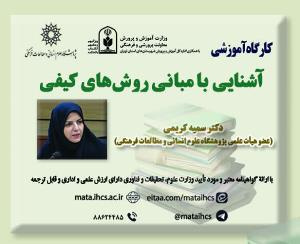بررسی رابطه واحدهای زمین شناسی با شدت فرسایش به کمک دو مدل با ساختار متفاوت (مطالعه موردی: حوزه آبخیز اخترآباد) (مقاله علمی وزارت علوم)
درجه علمی: نشریه علمی (وزارت علوم)
آرشیو
چکیده
فرآیند فرسایش شامل دو بخش اصلی فرسایندگی و فرسایش پذیری است. عامل اصلی فرسایندگی، شدت بارش و رواناب بوده و عامل اصلی فرسایش پذیری، نوع سازندهای موجود در سطح حوضه است که موضوع مورد تحقیق در منطقه مورد مطالعه است. هدف از مطالعه حاضر بررسی رابطه واحدهای زمین شناسی با شدت فرسایش است. لذا جهت نیل به این هدف در ابتدا به بررسی شدت فرسایش با استفاده از دو مدل پسیاک اصلاح شده و فارگاس پرداخته شد. مدل فارگاس بر پایه اصول نظری دو عامل فرسایندگی و عامل فرسایش پذیری ارائه شده است؛ درصورتی که مدل پسیاک اصلاح شده بر اساس 9 عامل است. در این تحقیق برای تفکیک شدت های یک نوع فرسایش با توجه به جدول S.S.F روش BLM انجام گرفت. برای برآورد فرسایش خاک در زیرحوضه های مورد مطالعه از مدل RUSLE استفاده گردید. برای تعیین خطر فرسایش با استفاده از ضریب ارزشی ارائه شده از مدل فارگاس به دست آمد. و در مدل پسیاک اصلاح شده، برای هریک از عوامل نه گانه ضرایبی در نظر گرفته شد. بررسی ها نشان داد که در مدل پسیاک اصلاح شده 79% از سطح حوضه دارای شدت فرسایش زیاد و 21% دارای شدت فرسایش خیلی زیاد بوده است و در مدل فارگاس 3/0% شدت فرسایش متوسط، 10% زیاد، 7/4% شدید و 85% بسیار شدید بوده است که ازاین بین 18% دارای تطابق با شدت فرسایش بسیار زیاد (بسیار شدید) و 2/7% دارای تطابق با شدت فرسایش زیاد در هر دو مدل بوده است. بررسی سازندها در مدل فارگاس نشان داده است که واحدهای سنگ چینه ای E1t1, E1t2, E2ig3, Q2f, Qt1 و Qt2 دارای شدت فرسایش بسیار شدید بوده اند؛ درحالی که در مدل پسیاک اصلاح شده واحدهای سنگ چینه ای E1t1 ,Qt1 و Qt2 دارای شدت فرسایش زیاد هستند که دلیل آن فرسایش پذیری سازندها است، همچنین واحدهای سنگ چینه ای E1t2 و Q2t دارای شدت فرسایش خیلی زیاد هستند که دلیل آن علاوه بر فرسایش پذیر بودن سازندها، تراکم بالای زهکشی در آن ها نیز هست.The Relationship between Erosion Intensity and Geologic Units using Two Models with Different Structures (Case Study: Akhtarabad Watershed)
Erosion is primarily caused by precipitation and runoff, while erodibility results from the type of the formations at the catchment scale, which is subject of this study. The objective of this study was to investigate the relationship between geologic units and erosion intensity. Initially, two models of MPSIAC and Fargas were used to study erosion intensity. The Fargas model was presented based on the theoretical principles of two erosion and the erodibility factors, while MPSIAC model was based on 9 factors. BLM method was used to separate the intensities of a type of erosion according to the S.S.F table. RUSLE model was used to estimate soil erosion in the studied sub-basins. To determine the risk of erosion using the value coefficient, Fargas model was used. In the MPSIAC model, coefficients were considered for each of the nine factors. Based on the results of MPSIAC model, 79% of the basin surface had high erosion intensity and 21% had very high erosion intensity, while according to Fargas model, 0.3% had moderate erosion intensity, 10% had high erosion intensity, and 4.7% and 85% were characterized with severe erosion and very severe erosion, respectively. Moreover, in both models, 18% corresponded to very high erosion intensity (very severe), while 7.2% had high erosion intensity. In Fargas model, E1t1, E1t2, E2ig3, Q2f, Qt1, and Qt2 had very strong erosion intensity, whereas, in MPSIAC model, E1t1, Qt1, and Qt2 had high erosion intensity on their surfaces. One reason for this phenomenon could be the erodibility of the formations. Most of E1t2 and Q2t are highly eroded, which contributes to a large amount of drainage in addition to the erodibility of the formations.







